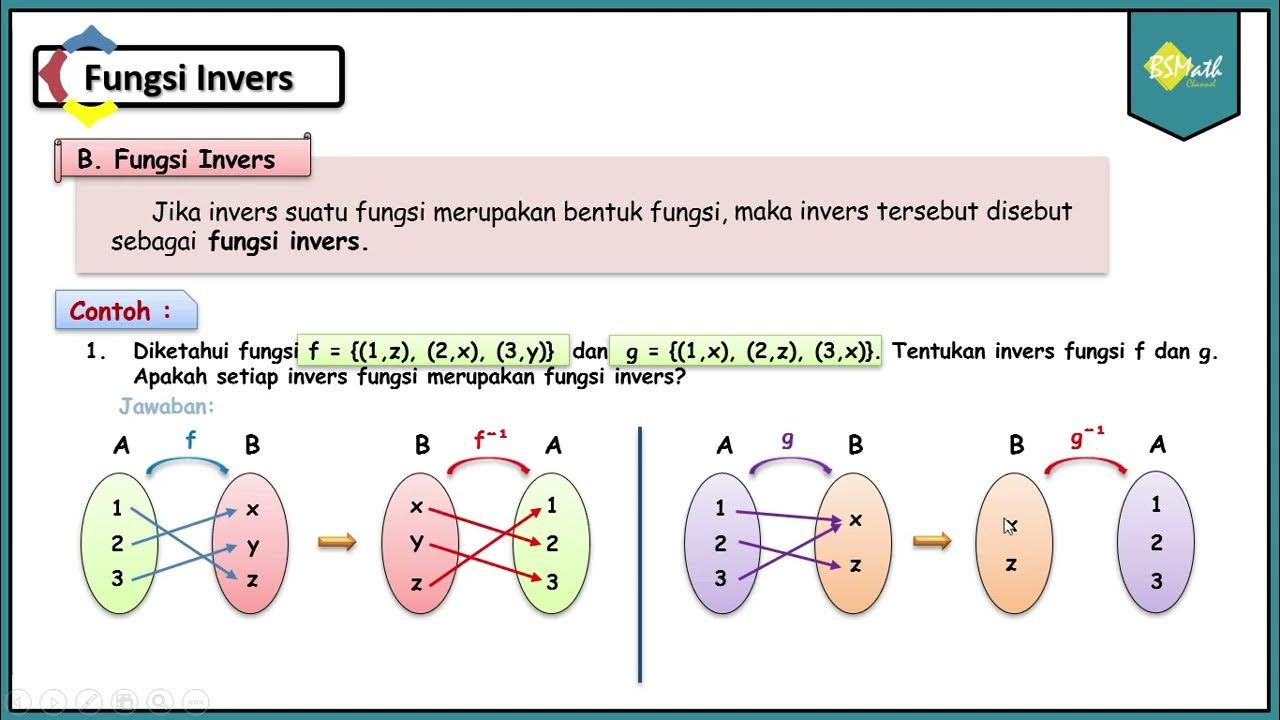Pengenalan tentang Grup
Summary
TLDRThe video discusses the concept of a group in mathematics, focusing on binary operations and the criteria for a set with an operation to be considered a group. It explains three key properties: associativity, the existence of an identity element, and inverses for all elements. The video also explores commutative groups and provides examples of both commutative and non-commutative groups, including vector spaces, matrices, polynomials, integers, and real numbers. The discussion includes group operations like addition and multiplication, emphasizing associativity and identity elements.
Takeaways
- 📚 A set with a binary operation is called a group if it satisfies certain properties.
- 🔄 The first property of a group is that the binary operation must be associative.
- 🆔 The second property is the existence of an identity element for the binary operation.
- ↩️ The third property is that every element in the set must have an inverse under the binary operation.
- ➕ If the binary operation is also commutative, the group is called a commutative (or abelian) group.
- 🧮 Examples of groups include vector spaces under addition and matrices under matrix addition.
- 🚫 The set of real numbers under multiplication is not a group because zero does not have a multiplicative inverse.
- ➗ By excluding zero, the set of real numbers under multiplication becomes a group.
- 🔁 Some groups have non-standard operations, like a modified operation involving addition and multiplication.
- 🔄 Not all groups are commutative; the group S3, representing permutations, is an example of a non-commutative group.
Q & A
What are the key conditions for a set and binary operation to be considered a group?
-A set with a binary operation is considered a group if it satisfies three conditions: (1) the operation is associative, (2) the set has an identity element with respect to the operation, and (3) each element in the set has an inverse with respect to the operation.
What additional property does a group need to be classified as a commutative (or Abelian) group?
-A group is classified as a commutative (or Abelian) group if its binary operation is commutative, meaning that for every two elements a and b in the set, the result of the operation a * b is the same as b * a.
Can you provide an example of a commutative group discussed in the lecture?
-Yes, the set of real numbers (ℝ) with the operation of addition is an example of a commutative group because addition is associative, has an identity element (0), each element has an inverse, and addition is commutative.
Why is the set of real numbers (ℝ) with multiplication not considered a group?
-The set of real numbers with multiplication is not a group because the element 0 does not have an inverse with respect to multiplication. For any real number a, multiplying by 0 results in 0, which prevents 0 from having an inverse.
How can we modify the set of real numbers with multiplication to form a group?
-By removing the element 0 from the set of real numbers, the remaining set of non-zero real numbers with multiplication forms a group, as every element in this set has an inverse.
What is an example of a non-commutative group given in the lecture?
-The group S3, which is the set of all bijective mappings (permutations) from the set {1, 2, 3} to itself, with the operation of function composition, is an example of a non-commutative group. In this group, composition of two permutations is not necessarily commutative.
Why is the group S3 not commutative?
-The group S3 is not commutative because there exist pairs of elements (permutations) where the result of composing them in one order (g followed by h) is different from composing them in the opposite order (h followed by g). This shows that function composition in S3 is not commutative.
What is the identity element in the group of permutations S3?
-The identity element in the group S3 is the permutation that maps each element in {1, 2, 3} to itself, i.e., the mapping that sends 1 to 1, 2 to 2, and 3 to 3.
What is the inverse of a permutation in the group S3?
-The inverse of a permutation in the group S3 is another permutation that, when composed with the original permutation, results in the identity permutation. Since S3 consists of bijective mappings, each permutation has a unique inverse.
How can we determine if a set with a binary operation is not a group?
-To show that a set with a binary operation is not a group, you only need to demonstrate that one of the group properties is violated. For example, if the operation is not associative, or if there is no identity element, or if not every element has an inverse, the set is not a group.
Outlines

Cette section est réservée aux utilisateurs payants. Améliorez votre compte pour accéder à cette section.
Améliorer maintenantMindmap

Cette section est réservée aux utilisateurs payants. Améliorez votre compte pour accéder à cette section.
Améliorer maintenantKeywords

Cette section est réservée aux utilisateurs payants. Améliorez votre compte pour accéder à cette section.
Améliorer maintenantHighlights

Cette section est réservée aux utilisateurs payants. Améliorez votre compte pour accéder à cette section.
Améliorer maintenantTranscripts

Cette section est réservée aux utilisateurs payants. Améliorez votre compte pour accéder à cette section.
Améliorer maintenant5.0 / 5 (0 votes)






